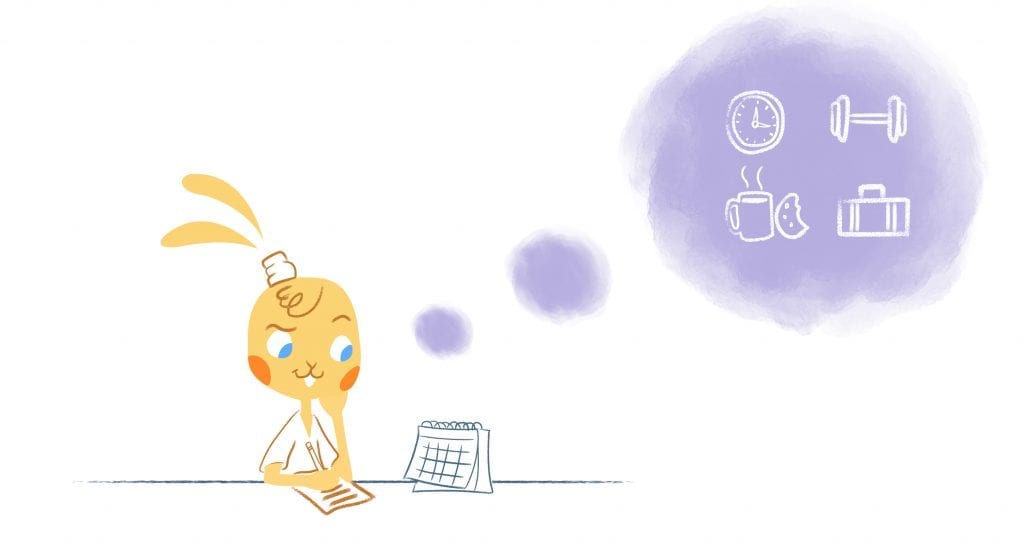

As businesses become more competitive, employee satisfaction is no longer a luxury. It’s a necessity.
Employee engagement and happiness are the cornerstones of a successful organization. In addition to being more productive, creative, and innovative, happy employees leave companies less often. On the other hand, an unhappy employee is more likely to disengage, be unproductive, and be a drain on your company.
In order to cultivate a happy workforce, all levels of the organization must commit to the process. The goal is to create a work environment where employees feel valued, respected, and empowered, not a fake or superficial sense of happiness.
Having said that, here are 20 ways to cultivate a happy workforce.
1. Hire people with a positive attitude.
If you are looking for the perfect candidate, it can be tempting to focus solely on their hard skills. A better strategy, however, is to focus on softer qualities over hard skills.
The key to finding a professional that fits seamlessly into your company culture and gives your company the best chance of future success is to place attitude above experience when choosing employees. An employee who has a positive attitude is more likely to be motivated, productive, and collaborative. Also, they are better at adapting to change when faced with challenges.
Employers can hire for attitude by looking for candidates with traits like enthusiasm, integrity, humility, and passion.
Among the ways companies can hire for attitude are:
- Communicate your expectations.
- During the interview, ask questions related to attitude.
- Internal promotions and employee referrals should be prioritized.
- Establish a clear growth path.
- Conduct case studies.
- Keep an eye on applicants when they think no one is watching.
2. Foster a culture of appreciation at work.
An everyday gesture of appreciation at work has proven to bring teams closer, improve employee morale, and increase productivity.
An example from Walden University’s study shows that doubling the number of employees who receive regular and adequate recognition increases (output) quality by 24%, reduces absenteeism by 27%, and reduces shrinkage by 10%.
[Related: How to Celebrate Employee Appreciation Day]
3. Communicate openly and transparently.
Employees must be able to communicate openly and transparently to build trust and foster a sense of belonging. You can encourage regular employee feedback by conducting surveys, focus groups, or one-on-one meetings.
However, it’s more important to use this feedback to identify areas of improvement and implement necessary changes.
4. Engage in team-building activities.
How can teams build communication and reliance? This can be achieved by focusing directly on those skills and developing them.
Team-building activities are often a priority for companies to foster relationships and foster team unity. Think about something like a scavenger hunt, two truths, and a lie or a trivia game for your team. One of the best team-building activities is to have holiday parties — and remember people’s birthdays.
5. Build a workplace community.
The rise of technology has made connecting both easier and more difficult. The number of Teams Meetings has increased by 252%, and Zoom users have grown by 2,900% since pre-pandemic days. Moreover, there are only 2 out of 10 workers who have a best friend at work today.
Putting it simply, the workplace community should not be overlooked. The benefits of building a community at work are numerous, including higher employee engagement, lower stress, and a higher likelihood of staying with an organization. To build a sense of community at work, try these methods:
- Communicate regularly. Trust and loyalty can be built through regular communication and transparency.
- Create a shared experience. Fundraise for charity or volunteer for a cause.
- Celebrate successes. Taking time to celebrate successes can foster pride and belonging.
- Create a respectful environment. By creating a respectful environment, everyone can share their ideas and perspectives.
- Create a positive workplace culture. Maintain an accepting work environment and encourage diversity.
- Foster connections. Create customized training processes for employees and organize team events.
6. Implement recess breaks.
Adding recess to the workday can increase productivity, improve mental and physical health, and foster team bonds among employees.
The following strategies will help you implement recess at work:
- Discuss the idea with your team. You might want to start by discussing recess with your colleagues. Identify their interest in taking regular breaks.
- Propose a plan. Propose a recess plan once you have received initial support. Establish recess breaks’ frequency, duration, and activities. Work schedules, space availability, and employee preferences should be considered.
- Schedule recess breaks. Make sure all employees are aware of the recess schedule and include it in their workday. To avoid disrupting workflow, schedule breaks well in advance.
- Provide activities. Different activities can be offered to meet the interests and preferences of different people. Games, exercises, relaxation techniques, or simply unstructured social time could all be included.
- Encourage participation. Reward employees for participating in recess breaks. Maintain a positive and inclusive atmosphere during breaks by making them fun and engaging.
7. Promote work-life balance.
A healthy balance between work and life is vital in today’s fast-paced world. Having enough free time for their personal lives, such as family and friends, is the key to this.
Flextime and telecommuting are examples of flexible work arrangements that employers can offer to promote work-life balance. Employees can also be encouraged to take breaks throughout the day and use their vacation days.
8. Encourage employee growth and development.
There is a need for employees to feel valued and to have opportunities to develop professionally. Therefore, investing in employee training and development is non-negotiable. By investing in employee development, you are demonstrating your dedication to employees’ success.
The following could be included:
- Reimbursing tuition.
- Providing training services.
- Developing mentorship programs.
- Consider sending employees to conferences, workshops, and online courses related to their area of expertise.
9. Empower employees to make decisions.
An employee wants to feel like he or she has a voice at work. By giving your team autonomy over their work and involving them in decision-making processes, you can empower them to make decisions.
In addition, you can trust employees to complete their tasks without micromanaging them.
An increase in autonomy has been shown to positively impact feelings of belonging, motivation, productivity, trust, work-life balance, and mental well-being.
10. Promote friendships at work.
As a means of finding happiness at work, “relationships with colleagues and co-workers are super important,” said Ahron Friedberg, clinical professor of psychiatry at Mount Sinai School of Medicine in New York City and co-author of Towards Happiness—A Psychoanalytic Approach to Finding Your Way. There are examples of employees who could earn more money at other jobs but choose to stay at their current jobs because “they like their peers, they like their boss, and there is an opportunity to learn more.”
According to Jeannie Moravits Smith, a leadership coach and HR consultant in San Diego, the most common reason why employees are unhappy is a lack of rewarding workplace relationships. “People are sticking around in organizations because they feel a sense of joy; they feel they belong,” she said.
When employees are unsatisfied with their jobs, Moravits Smith asks them why. “The lack of connection with their direct manager is No. 1” is why workers feel unhappy, she explained. “When there is a mutual relationship of trust and concern, the sky’s the limit regarding productivity, commitment, and even fostering a happier workplace.”
11. Occasionally step out of the routine at work.
When we are swamped, we often fail to see the bigger picture. Consequently, we cannot provide perks to employees or plan fun events that will make the workplace a happier place to work. But instead, give your people something surprising and fun.
Spending the day at the amusement park, watching a movie with popcorn and candy, and getting a chair massage in the afternoon are some ideas. The more you can do to make people feel that you are taking care of them, the happier they will feel.
12. Recognize and celebrate achievements.
Whether it’s a significant or small achievement, take time to celebrate it. A company-wide party, team lunch, or simply taking a few minutes to recognize team members’ achievements could all be used to recognize employee accomplishments.
13. Offer competitive compensation and benefits.
Employees want to feel fairly compensated for their work. For this reason, you should always offer top talent competitive compensation and benefits.
Furthermore, you should ensure that their benefits packages meet the needs of their employees.
14. Provide wellbeing perks.
However, compensating employees alone won’t lead to employee happiness retention. Several factors affect people’s decision to stay with an organization at work.
A few of these are outstanding health and wellness programs that promote mental and emotional health include:
- Rewards and discounts
- Flexible hours
- Childcare benefits
- Paid leaves
- Performance bonuses
- Paid vacations
- Development plans
All of these tools can be used to reward employees and show them that they are appreciated.
15. Respond promptly to workplace conflicts and concerns.
When there’s a conflict or concern, it should be addressed quickly and fairly. Taking care of complaints and grievances should be clear and effective. Above all, no employee should fear retaliation for raising concerns.
16. Be fair.
Be fair and consistent with all your employees. As a result, trust and respect will be built. Moreover, people who feel valued at work and are treated fairly are more engaged and productive.
The following are some ways to treat employees fairly:
- Provide all employees with a sense of value and respect.
- Allow employees to share grievances with management.
- Explain promotions and pay raises openly and transparently.
- Ensure that executive positions are represented by a diverse group.
- Encourage employees to set their own goals.
17. Embrace some selfish thinking.
It is important to encourage people to have personal career goals if they want to be happy at work. It makes a big difference to people when they feel like they are working toward something rather than just focusing on the day-to-day politics and stresses of work.
Since each challenge has a purpose, it’s easier to handle. If you focus on your personal goals, you can separate yourself from the negativity at work.
18. Share humor.
If appropriate, share jokes or other types of humor with your colleagues. Working together can make professionals feel happier if they can smile and laugh with each other.
However, don’t share jokes that aren’t appropriate or that everyone in the audience can relate to.
19. Ensure a healthy and comfortable work environment.
Ensure the physical work environment is conducive to productivity, comfort, and safety. Workstations should be ergonomic, lighting must be adequate, and access to healthy food and beverages. Ensure that employees are physically active and participate in wellness programs to help them lead healthy lifestyles.
20. Be a role model.
In order for an organization’s culture to flourish, its leaders are crucial. As such, they demonstrate empathy, respect, and a commitment to employee wellbeing by modeling the values and behaviors that they expect from their employees.
FAQs
What is a happy workforce?
Employees who feel engaged, valued, and motivated to do their best work have a happy workplace. This increases productivity, creativity, and loyalty to the company.
Why is it beneficial to have a happy workforce?
The following are some of the benefits of having a happy workforce:
- Enhanced productivity.
- An increase in creativity and innovation.
- A reduction in absenteeism and turnover.
- Improved customer satisfaction.
- A better financial performance.
What are some of the challenges of cultivating a happy workforce?
When it comes to cultivating a happy workforce, companies face several challenges, including:
- A one-size-fits-all approach that works for everyone.
- Tracking and measuring employee happiness.
- Resolving issues contributing to unhappiness at the individual and team levels.
What are some specific examples of things companies can do to cultivate a happy workforce?
The following are some specific ways companies can cultivate a happy workforce:
- Make flexible work arrangements, such as telecommuting or flextime, available.
- Provide amenities such as gyms, childcare, and cafeterias on site.
- Offer discounts on products and services to employees.
- Organize social events and team-building activities.
- Observe employee birthdays and anniversaries.
- Provide wellness and health screening programs.
- Volunteer opportunities should be provided to employees.
How can I measure the success of my efforts to cultivate a happy workforce?
You can measure the success of your efforts to cultivate a happy workforce in several ways, including:
- A survey of employee satisfaction.
- Engagement surveys for employees.
- Absenteeism and turnover rates.
- A survey of customer satisfaction
- Financial performance.
Image Credit: Fauxels; Pexels











John Hall
John Hall is the co-founder of Calendar a scheduling and time management app. He’s also a keynote speaker that you can book at http://www.johnhallspeaking.com.